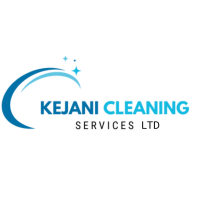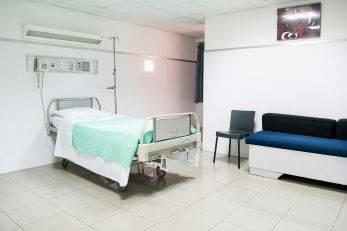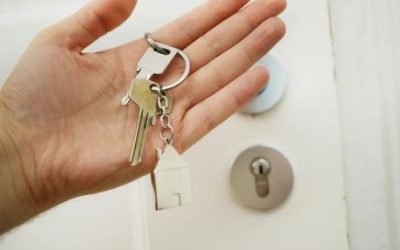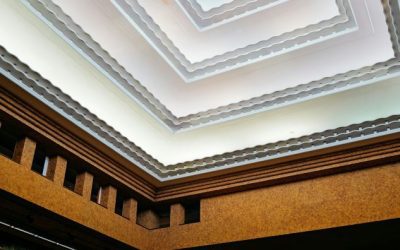When construction or renovation work is completed in a hospital setting—whether it’s a new wing, operating room, maternity ward, or reception area—the space is far from ready for use. Post-construction cleaning in hospitals requires more than just sweeping up dust or mopping floors. It demands strict cleaning protocols, attention to infection control, and compliance with healthcare sanitation standards to ensure the space is safe for patients, staff, and visitors.
In this article, we explore the essential cleaning protocols involved in hospital post-construction cleaning and how Kejani Cleaning Services ensures compliance with hygiene and healthcare standards across Kenya.
Why Hospital Post-Construction Cleaning Is Different
Hospitals are high-risk environments. Unlike residential or commercial buildings, they:
-
Host immunocompromised patients
-
Require sterile environments in surgical areas
-
Must meet Ministry of Health and infection control standards
-
Operate under continuous pressure to remain contamination-free
Therefore, cleaning after construction must be thorough, strategic, and medically informed.
Step-by-Step Hospital Post-Construction Cleaning Protocols
1. Site Assessment and Risk Analysis
Before cleaning begins, a comprehensive assessment is conducted to:
-
Identify high-risk zones (e.g., ORs, ICUs, labs)
-
Understand airflow and HVAC exposure during construction
-
Determine containment needs
-
Evaluate what building materials or dust may be hazardous (e.g., silica, asbestos)
Kejani teams conduct pre-cleaning walkthroughs with hospital facility managers and infection control officers.
2. Zoning and Isolation
To prevent cross-contamination:
-
Construction zones are sealed off with plastic sheeting or temporary walls.
-
Negative air pressure machines are used to contain dust.
-
Air scrubbers with HEPA filters are installed to clean airborne particles.
Barrier zones are especially critical near surgical suites, intensive care, and sterile supply storage areas.
3. Dry Debris Removal
All debris, such as:
-
Wood scraps
-
Drywall dust
-
Nails and glass
-
Plastic wrappings
…is removed manually before any wet cleaning is done.
We use industrial-grade vacuum cleaners with HEPA filtration to reduce airborne dust during this stage.
4. Wet Cleaning and Disinfection
Once dry materials are cleared, the deep cleaning phase begins:
-
Ceilings, light fixtures, and vents are wiped down
-
Walls and doors are cleaned top to bottom
-
Windows, frames, and sills are cleaned and disinfected
-
Floors are swept, mopped, and polished depending on the surface type
In high-risk zones like operating rooms, hospital-grade disinfectants approved by the World Health Organization (WHO) or Ministry of Health Kenya are used.
5. HVAC System Cleaning
Construction dust can contaminate:
-
Ducts
-
Vents
-
Filters
-
Fans
HEPA vacuuming and filter replacement are performed to ensure air systems are clean and do not recirculate harmful particles.
6. Surface Disinfection and Terminal Cleaning
For patient care areas, terminal cleaning (the highest standard of hospital disinfection) is done using:
-
EPA-registered or KEBS-certified disinfectants
-
Microfiber cloths (color-coded to prevent cross-contamination)
-
UV sterilization (if needed)
We clean and disinfect all touchpoints:
-
Door handles
-
Light switches
-
Handrails
-
Beds and tables (if moved into the space early)
-
Washroom fixtures
7. Specialized Area Protocols
a. Operating Rooms (ORs)
-
Use of sterile cleaning agents
-
Floor-to-ceiling disinfection
-
Cleaning all equipment fixtures
-
Adhering to surgical site infection (SSI) prevention guidelines
b. Intensive Care Units (ICUs)
-
Isolated cleaning teams
-
Use of PPE
-
No introduction of external cloths or tools
-
Dual-step disinfection
c. Pharmaceutical or Laboratory Areas
-
Antimicrobial disinfectants only
-
Avoidance of any chemical residues
-
Non-abrasive cleaning for sensitive counters
8. Waste Management
Hospital post-construction waste includes:
-
Sharps
-
Packaging
-
Chemicals
-
Cleaning water
We separate waste by type and ensure biohazardous or chemical materials are handled by licensed waste disposal services in compliance with NEMA regulations in Kenya.
9. Final Inspection and Verification
Once cleaning is complete:
-
We conduct a walkthrough with hospital administrators
-
Swab tests and ATP (Adenosine Triphosphate) testing can be done to measure cleanliness
-
Client sign-off is required for project completion
Cleaning Equipment Used in Hospital Settings
At Kejani Cleaning Services LTD, we use only hospital-appropriate equipment, including:
-
HEPA vacuums
-
Color-coded microfiber cloths and mop heads
-
Hospital-grade disinfectants (Dettol Medical, JIK Hospital Strength, etc.)
-
Auto-scrubbers for large floor spaces
-
PPE for all staff (masks, gloves, gowns, goggles)
Common Hospital Areas Cleaned After Construction
-
Operating Theatres
-
Emergency Rooms
-
Maternity Wards
-
Recovery Rooms
-
Laboratories
-
Cafeterias
-
Lobbies and Reception
-
Staff Break Rooms
-
Patient Washrooms
-
Hallways and Elevators
How Kejani Ensures Compliance
We follow a 6-point compliance checklist:
✅ MOH & WHO-compliant cleaning protocols
✅ Certified and trained medical cleaning team
✅ Use of hospital-safe, eco-friendly cleaning agents
✅ Final inspection with hospital representatives
✅ HEPA filtration on all cleaning vacuums
✅ Documentation of cleaning processes for audit purposes
Final Thoughts
Hospital post-construction cleaning is not just about making spaces look tidy—it’s about making them safe, sterile, and ready for critical care operations. By following strict cleaning protocols and healthcare sanitation standards, Kejani Cleaning Services ensures that hospitals across Kenya can open their doors with full confidence after a construction or renovation project.
✅ Book Professional Hospital Cleaning Services in Kenya
📞 Call or WhatsApp: +254 115 887 085
🌐 Visit: www.kejanicleaning.co.ke
📧 Email: info@kejanicleaning.co.ke
We serve Kenya, and Beyound





0 Comments